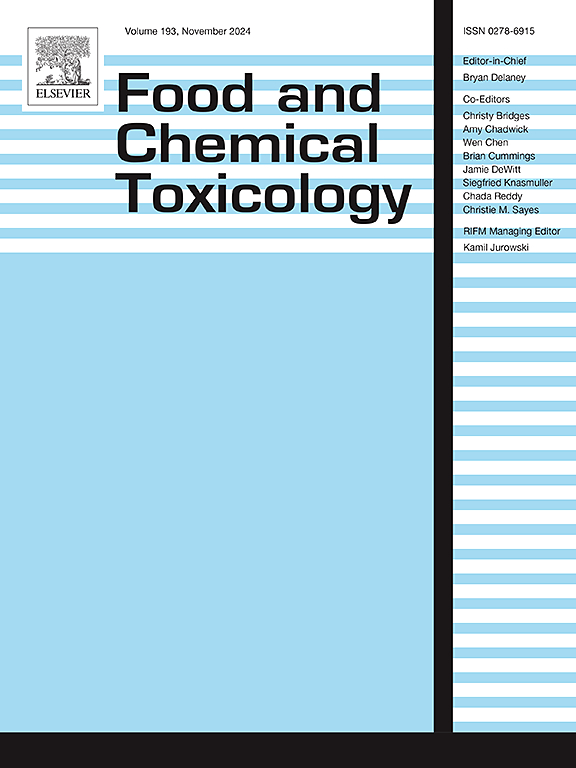Hepatic antifibrotic effects of bezafibrate in vitro and in vivo models of liver fibrosis
IF 3.9
3区 医学
Q2 FOOD SCIENCE & TECHNOLOGY
引用次数: 0
Abstract
Bezafibrate (BZF) is a drug that reduces cholesterol and triglyceride levels in the blood. Research indicates that BZF, through activation of PPAR receptors, regulates the expression of genes involved in lipid homeostasis, inflammation, cell differentiation, and proliferation. This study investigated the in vitro and in vivo effects of BZF on activated hepatic stellate cells (HSCs) and on carbon tetrachloride-induced liver fibrosis in mice. After 72 h of treatment in vitro, BZF decreased cell proliferation, reversed the phenotype, decreased cell contraction, and induced autophagy. In addition, BZF promoted a protective effect on tetrachloride-induced liver fibrosis in mice, through antifibrotic actions. These findings suggest that BZF may have a potential antifibrotic effect, which could emerge as a possible new therapy for the treatment of liver fibrosis.
求助全文
约1分钟内获得全文
求助全文
来源期刊

Food and Chemical Toxicology
工程技术-毒理学
CiteScore
10.90
自引率
4.70%
发文量
651
审稿时长
31 days
期刊介绍:
Food and Chemical Toxicology (FCT), an internationally renowned journal, that publishes original research articles and reviews on toxic effects, in animals and humans, of natural or synthetic chemicals occurring in the human environment with particular emphasis on food, drugs, and chemicals, including agricultural and industrial safety, and consumer product safety. Areas such as safety evaluation of novel foods and ingredients, biotechnologically-derived products, and nanomaterials are included in the scope of the journal. FCT also encourages submission of papers on inter-relationships between nutrition and toxicology and on in vitro techniques, particularly those fostering the 3 Rs.
The principal aim of the journal is to publish high impact, scholarly work and to serve as a multidisciplinary forum for research in toxicology. Papers submitted will be judged on the basis of scientific originality and contribution to the field, quality and subject matter. Studies should address at least one of the following:
-Adverse physiological/biochemical, or pathological changes induced by specific defined substances
-New techniques for assessing potential toxicity, including molecular biology
-Mechanisms underlying toxic phenomena
-Toxicological examinations of specific chemicals or consumer products, both those showing adverse effects and those demonstrating safety, that meet current standards of scientific acceptability.
Authors must clearly and briefly identify what novel toxic effect (s) or toxic mechanism (s) of the chemical are being reported and what their significance is in the abstract. Furthermore, sufficient doses should be included in order to provide information on NOAEL/LOAEL values.
 求助内容:
求助内容: 应助结果提醒方式:
应助结果提醒方式:


